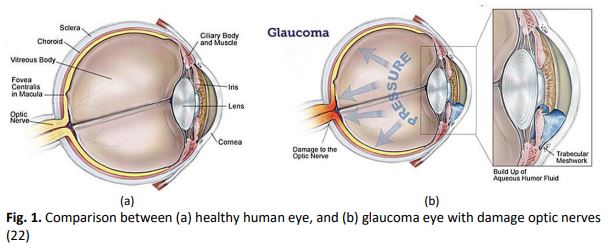Study on Aqueous Humour Hydrodynamics of Glaucoma Condition Using 3D Printed Model and Particle Image Velocimetry (PIV)
DOI:
https://doi.org/10.37934/arfmts.89.1.2641Keywords:
Particle Image Velocimetry, Glaucoma, Aqueous Humour, 3D modelAbstract
This study aims to explore the knowledge on fluid flow properties of the aqueous humour (AH), specifically on the anterior segment (AS) of the human eye for a medical condition called Glaucoma. The research objectives are to study on fluid flow characteristics of velocity and pressure of the AH on the AS of the eye using enlarged 3D printed model and computational analysis, and also to analyse the suitability of the 3D generated anterior AS in fluid flow analysis application on particle image velocimetry (PIV). Using polyvinyl alcohol (PVA) as a water-soluble 3D printing filament, a 3D model of the AS of the human eye was generated with SolidWorks 2018 and printed using Creality Ender 3. This printed model serves as the pattern for silicon rubber mould production using vacuum casting process. Analysis of AH flow hydrodynamics are conducted with computational analysis using ANSYS Workbench 19.2. Key findings support that use of PVA material suite the creation of specific shapes and patterns for 3D modelling applications alike, and silicon rubber moulding creates a non-reactive and long-lasting mould for PIV applications. Computational analysis findings support the use of the generated model for PIV applications. Overall, the study successfully supports the use of 3D printed model for PIV application and future work that can be induced include direct experimentation of the mould with PIV.
Downloads

































